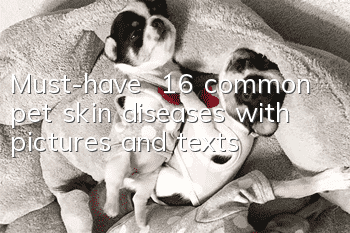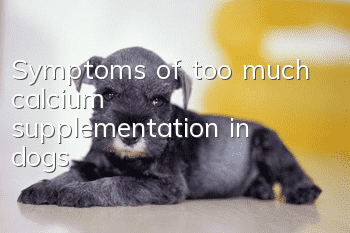Must-have | 16 common pet skin diseases with pictures and texts

If your dog keeps scratching on its body and making sharp barks, or if there are red rashes, dandruff, hair loss, etc. somewhere on its body. Then your pet may be suffering from a skin disease. Below we provide some pictures of common pet dog skin diseases for your reference. At the same time, we remind you that if you cannot deal with your pet dog’s skin diseases, we recommend that you go to a local pet hospital for treatment
1. Allergic skin disease
Some pet dogs will have allergic reactions to bath products and food. At the same time, the surrounding environment can also stimulate the occurrence of allergic skin diseases in dogs, such as pollen, mosquito bites, etc. Dogs suffering from atopic dermatitis will scratch constantly. If you scratch the area where the dog keeps scratching, you will find an ugly rash. Corticosteroids can be used for allergic skin diseases, but it is best to avoid contact with allergens.
2. Yeast infection
If your dog keeps scratching its ears and licking its paws, you can go to the hospital to check whether it is a yeast infection. Pet dogs with yeast infections will be angry, itchy, or have skin discoloration or loss for no reason. Yeast usually reproduces in places that are favorable to it, such as paws, ears, etc. Therefore, these two places are usually the most susceptible parts of dogs to infection. Yeast infections are easy to diagnose and can be treated with regular ointments, unless your veterinarian recommends oral medications or medicated baths.
3. Folliculitis
Superficial folliculitis is an infection that causes lumps, scabs, and sores on your dog’s skin. Short-haired dogs are more susceptible to this type of folliculitis, while long-haired dogs may suffer from loose skin tags and peeling. Dogs suffering from folliculitis generally suffer from scabies, allergies, abrasions and other skin diseases. The general treatment method is to use oral antibiotics, antibacterial plasters and dog shampoo.
4. Pyoderma
Pyoderma is another common bacterial infection. Pyoderma is common in puppies. Dogs with pyoderma will develop pustules. After a long time, they will burst and then form scabs. Generally, pustules will appear in areas with little hair or hair loss. abdomen. This disease can be treated with topical medications. A small number of dogs will continue to spread when they suffer from pyoderma, which is difficult to cure after long-term treatment.
5. Seborrheic dermatitis
Seborrheic dermatitis will cause the dog's skin and hair to become very greasy and accompanied by dandruff shedding. This disease has a certain hereditary nature. Some dogs will develop seborrheic dermatitis until they reach a certain age. . Dogs with seborrheic dermatitis are often complicated by other diseases, such asSuch as allergies and hormonal abnormalities. In the case of pets with multiple diseases, it is most important to treat seborrheic dermatitis first.
6. Ringworm
Ringworm is a canine skin disease caused by fungi on the dog’s head, paws, ears, front upper limbs, etc. Dogs with ringworm will have inflamed, scaly small circles locally, and it can also cause the dog’s Dogs under one year old are most susceptible to alopecia, and the disease can easily spread, especially in kennels and at home. Various antibiotic treatments are best for this disease.
- Raising Papillon Dogs requires giving them a certain amount of free space
- Tips and taboos you need to know about taking your dog in a car
- How to deal with a dog’s fever
- My dog hasn’t pooped or defecated in three days
- Will a lost native dog recognize its new owner?
- What's wrong with the dog's eyes watering?
- What should I do if my dog chases passers-by and yells?
- Do dogs say goodbye to their owners before they die?
- Will a dog being fostered be considered abandoned?
- Why can’t dogs eat white radish?



